Newsletter
Current
Previous
|
December 2012
|
|
|
|

|
'On the second day of Christmas
My true love sent to me:
2 turtle doves
And a partridge in a pear tree'
|
|
|
How are our turtle doves faring?
Your true love may have difficulty nowadays sending 2 turtle doves. The turtle dove population fell by more than 90% between 1970 and 2009. Changes in farming practices have contributed to this. The birds feed almost entirely on small seeds from wild plants, now scarce, which grow among crops. The RSPB are embarking on a programme with farmers to plant these seeds on their land. You can help by reporting any sighting by calling the Turtle Dove hotline: 01603 697527 or report by email with photos and details to turtledove@rspb.org.uk.
Turtle doves are known as symbols of devoted love and, in spite of their place in poetic tradition, they are shot in huge numbers during their long migration between Europe and Africa.
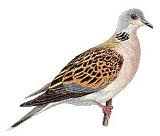 Their common name is taken from their gentle, purring song and has nothing to do with reptiles. The 'turr turr' call is one of the UK's most evocative summer sounds, but is becoming increasingly rare.
Their common name is taken from their gentle, purring song and has nothing to do with reptiles. The 'turr turr' call is one of the UK's most evocative summer sounds, but is becoming increasingly rare.
www.operationturtledove.org
|
|
|
|
| 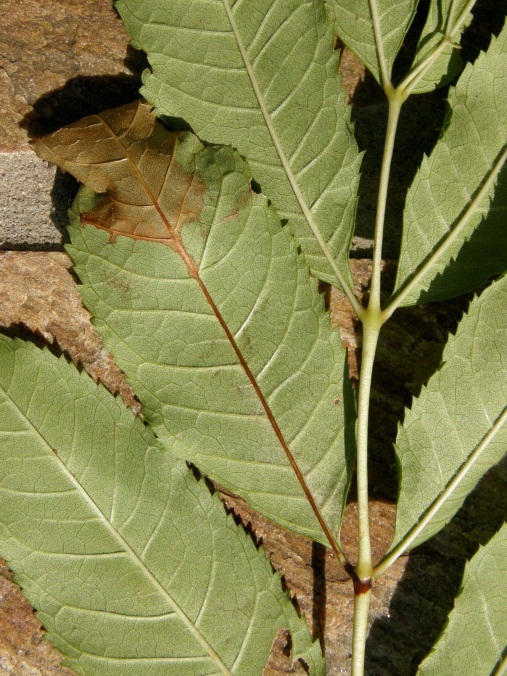 Ash trees under threat: When Dutch elm disease affected our elm trees, it changed our countryside forever, but the latest threat has the potential to be just as big. You know it's serious when it hits the national news for a prolonged period. The Ash (Fraxinus excelsior), one of the most characteristic and best loved British trees, is facing a deadly fungal disease, dieback of ash (Chalara fraxinea), for which there is no known cure. It causes leaf loss and crown dieback in affected trees, with lesions on the bark, usually leading to tree death. Millions of trees are thought to be at threat. It is hoped that some trees will prove to be resistant to the disease and these can be used in the future to produce hardy trees. Hard to imagine a summer without being able to look up and see the lovely tracery of ash leaves against a blue sky. Ash trees under threat: When Dutch elm disease affected our elm trees, it changed our countryside forever, but the latest threat has the potential to be just as big. You know it's serious when it hits the national news for a prolonged period. The Ash (Fraxinus excelsior), one of the most characteristic and best loved British trees, is facing a deadly fungal disease, dieback of ash (Chalara fraxinea), for which there is no known cure. It causes leaf loss and crown dieback in affected trees, with lesions on the bark, usually leading to tree death. Millions of trees are thought to be at threat. It is hoped that some trees will prove to be resistant to the disease and these can be used in the future to produce hardy trees. Hard to imagine a summer without being able to look up and see the lovely tracery of ash leaves against a blue sky.
It's thought that it first entered the UK on nursery saplings, but has now been found at many sites on wild ash trees. Authorities were slow to respond to the threat. It's difficult to control as it is spread by leaf litter or is wind-blown. It has the potential to be a major disaster. Denmark has already lost 90% of its ash trees.
|
|
With no leaves left on the trees, the best signs to look for are the lesions on the bark and die back.
It is illegal to remove infected material from a site. If you find any sick trees, please do not disturb the material; report the whereabouts to:
Dr Glynn Percival, Plant Physiologist
Bartlett Tree Research Laboratory
Plant Science Laboratories, Harborne Building
School of Biological Sciences
Whiteknights
University of Reading
Reading, Berkshire.
RG6 6AS.
Call: 0118 988 3618
Email: gpercival@Bartlettuk.com
Email: jbanks@Bartlettuk.com
For more information, go to the Wokingham District Veteran Tree Association website where there is a feature giving information on chalara. For more information, see here
|
The Ash
The ash is nearly always the last tree to come into leaf.
According to an old wive's tale, witches eat the buds on Walpurgisnacher (May Eve) so the trees do not come into leaf until St. John's Eve (Midsummer Eve).
Ash is often the first tree to drop its leaves in the autumn. Its foliage is fairly sparse so a rich ground flora is able to grow up under native ash trees. It can bear up to 100,000 winged fruits on one tree.
Only the oak bears more lichens.
It is thought to have healing and restorative properties. In Scandinavia, it is known as yggdrasil, 'Tree of rebirth and healing'.
|

'In short, so useful and profitable is this tree (next to the oak) that every prudent Lord of the manor should employ one acre of ground with Ash or Acorns to every twenty acres of other Land: since in as many years it would be worth more than the land itself'
|
|
 |
|
|
Work to clear the area in Redhatch Copse for the mast compound and access track to be built re-started in late October. I received several calls from residents who were concerned about the size of the area cleared. The compound is to be 12m x 12m and the cleared area is about 40m x 35m. After my request to WBC to check on the work done, three officers made a site visit and declared that the contractors have followed what was agreed in the Management Plan for the site, which included removing sycamore (removal of this invasive species being part of that plan), and giving a reasonable working area for the construction of the mast.
 Reading University have had to submit an application outlining the construction methods which includes protection measures for the Copse. This can be found on the Wokingham Borough Council planning website under C/2012/1889 should anyone be interested in the detail.
Reading University have had to submit an application outlining the construction methods which includes protection measures for the Copse. This can be found on the Wokingham Borough Council planning website under C/2012/1889 should anyone be interested in the detail.
I've had a look at these documents and it does appear that there are strict conditions on how the work is done, which we hope will be adhered to.
ANNE BOOTH
The University has a lot to live up to, having recently been awarded the Green Flag for the Whitenights campus, which was judged to be one of the best open spaces in the country, so we can have high expectations of their treatment of Redhatch Copse. Ed.
|
 |
|
As some trees are felled, thankfully others are being planted. In commemoration of the Queen's Diamond Jubilee, Wokingham Borough Council, in collaboration with Wokingham District Veteran Tree Assn (master-minded by Barbara Stagles, WDVTA Jubilee Trees coordinator), are to undertake a programme of planting 60 specimen- sized English oak trees at appropriate locations across the borough. The following planting ceremonies will take place and everyone is welcome to attend:
Rushey Way - 12.30pm 4th December (2 trees in grass verge in front of Loddon school playing fields)
Elm Road - 11am Tuesday 11th December (1 tree in grass area on the bend where a great Cedar of Lebanon once grew and was felled by a big storm)
Avalon Road - 2.30pm Thursday 13th December (1 tree on the grass circle within the roundabout)
Sol Joel Park - Still to be decided (2 trees)
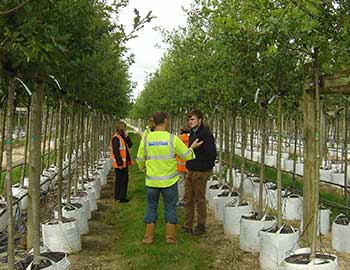 The trees were bought from Barcham's nursery, Cambridge in June. They are between five and seven years old and will be almost four metres tall when they are planted. Contractors will be planting the trees for two to three weeks starting in National Tree Week (24 November to 3 December). Each tree will have a numbered commemorative plaque to display and will be recorded in the Woodland Trust's Royal Record. The trees were bought from Barcham's nursery, Cambridge in June. They are between five and seven years old and will be almost four metres tall when they are planted. Contractors will be planting the trees for two to three weeks starting in National Tree Week (24 November to 3 December). Each tree will have a numbered commemorative plaque to display and will be recorded in the Woodland Trust's Royal Record.
(Right: Barcham Trees)
|
|
Stalwarts of the Wednesday volunteer work group in Maiden Erlegh Nature Reserve
|
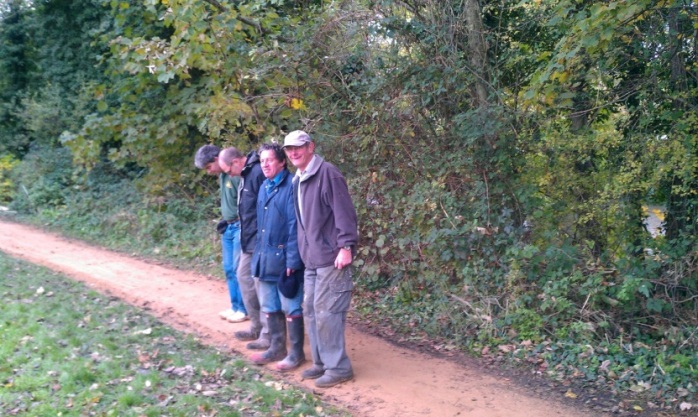
|
What's happening here?
The prize (with tongue in cheek) - free lifetime membership of EEG, newsletter and entry to all walks and talks.
Suitable captions to our Chair Alan.
|
|
Have you seen any?
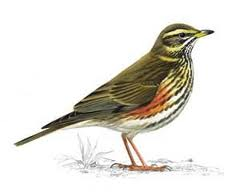 WINTER BIRDS: Redwings are the smallest thrush species you're likely to see in the UK and they can be easily identified by their orange-red coloured flanks. Only a handful of Redwings live and breed in the UK all year round, so the annual arrival of wintering birds from Scandinavia and Iceland is a welcome treat for birdwatchers. WINTER BIRDS: Redwings are the smallest thrush species you're likely to see in the UK and they can be easily identified by their orange-red coloured flanks. Only a handful of Redwings live and breed in the UK all year round, so the annual arrival of wintering birds from Scandinavia and Iceland is a welcome treat for birdwatchers.
These cold weather visitors are a bit darker than the resident Redwings and tend to be slightly bigger with longer wings - possibly to cope with the extra distance they travel. Look for them on trees and shrubs with winter berries, especially hawthorn and mountain ash. (Source: UK Safari)
|
|
Let's not forget the insects at this time of year

You may find a delicate lacewing in your house. It's probably Chrysoperla carnea looking for somewhere to hibernate. Once inside it slowly changes from green to pink or straw coloured. The larvae are used in many countries to control aphids on valuable crops, as well as controlling the aphids in your garden, so be kind to it.
(Source: UK Safari)
|
|
|
In appreciation of Nature
Well done, the children of Aldryngton Primary
Aldryngton Primary School, Earley recently held a House Photographic Competition in which pupils entered their own photos, which had to portray their photographic vision of Autumn. As members of EEG, Anne Booth and I were invited by Aldryngton head teacher, Elaine Stewart, to judge the entries. What a difficult job! The standard of the entries was so high that it was difficult to choose the winners. In fact, all the children who entered were winners because they won a point for the house they represented, and the top winners were presented with certificates at a special morning school assembly. There will be an exhibition of all the entries in order for parents to see what a high standard was achieved. First place entries are shown below.
Sheila Crowson
Click on each picture for a larger version.
|
Lower School - Poppy Wood

|
Middle School - Sandy Totolici

|
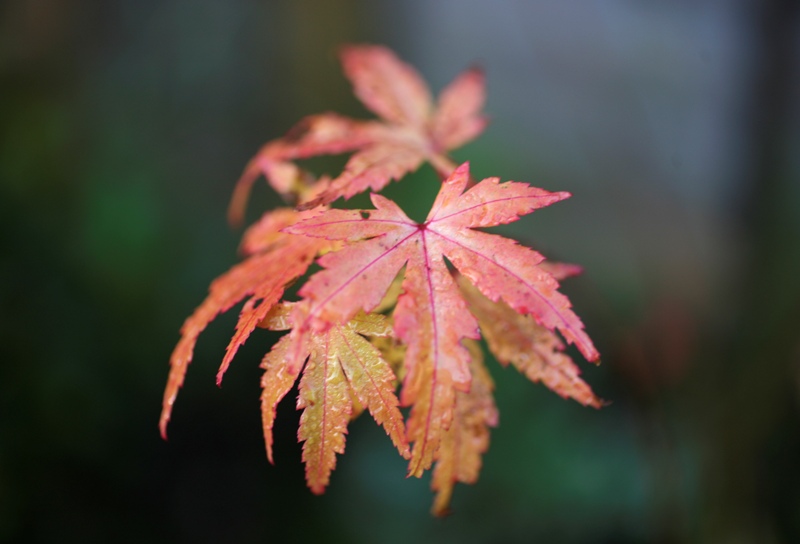
Upper School equal first:
Tom Robinson
|
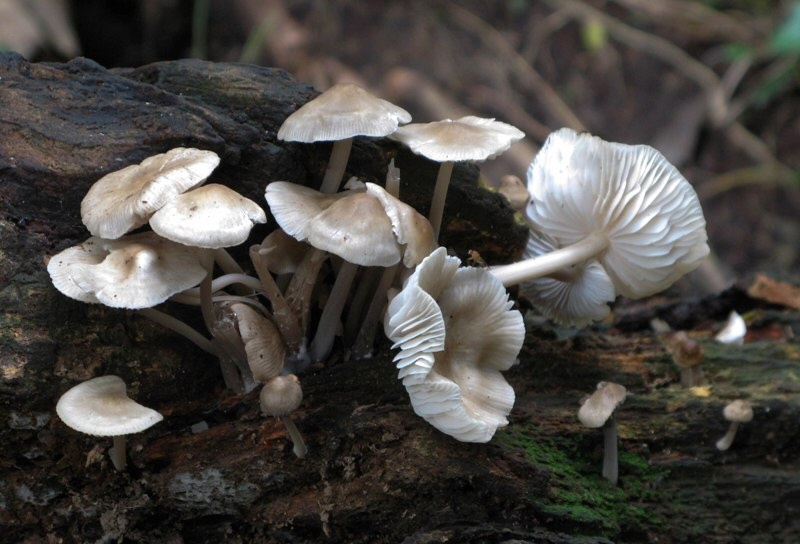
Upper School equal first:
Zoe Wicks
|
|
|
Whilst on the subject of photography, here's how to do night photography when you're tucked up in bed......

The last newsletter had an extract from an article, 'In the Night Garden', by John Booth on the fun he had with a trail camera. Just to remind you, at right, a young fox in the garden which the camera captured at dawn.. John's full article follows ........
|
|
In the Night Garden
Wildlife documentaries often feature stills or grainy footage of creatures taken automatically by hidden cameras - a way of keeping watch less likely to frighten the target animals, and which is easier for the film-makers than requiring human observers to stay awake, but keep still all night while being bitten by insects.
When asked recently to suggest a special present for myself I investigated 'trail cameras' and found that an entry-level model cost about £115 (excluding memory card). This has passive infra-red activity sensing, 5 Mega-pixel colour stills, video, time-stamped images, and infra-red illumination for night shots.
We already knew that foxes came to our garden at dusk but didn't know what happened then - it turns out that they come and go quite often. Over one night in July the first visit was at 21:53 for a couple of minutes, then again at 23:49, on the second occasion seeming to circle the lawn. At 00:41 came another fox visit then a cat at 01:14. Then in the dawn at 05:08 another visit captured in colour, and again at 05:39. Was this one fox patrolling its territory throughout the night, or several acting independently?
They are not brilliant images, although in daylight there have been some quite good snaps of woodpigeons, but they certainly give an idea of what goes on wherever the camera is pointed. I look forward to better results and interesting insights into our visitors as I experiment with the location of the camera and its programmable settings.
I would be interested to hear from other EEG members who are using similar equipment or have found other ways to monitor the creatures of the night.
John Booth
|
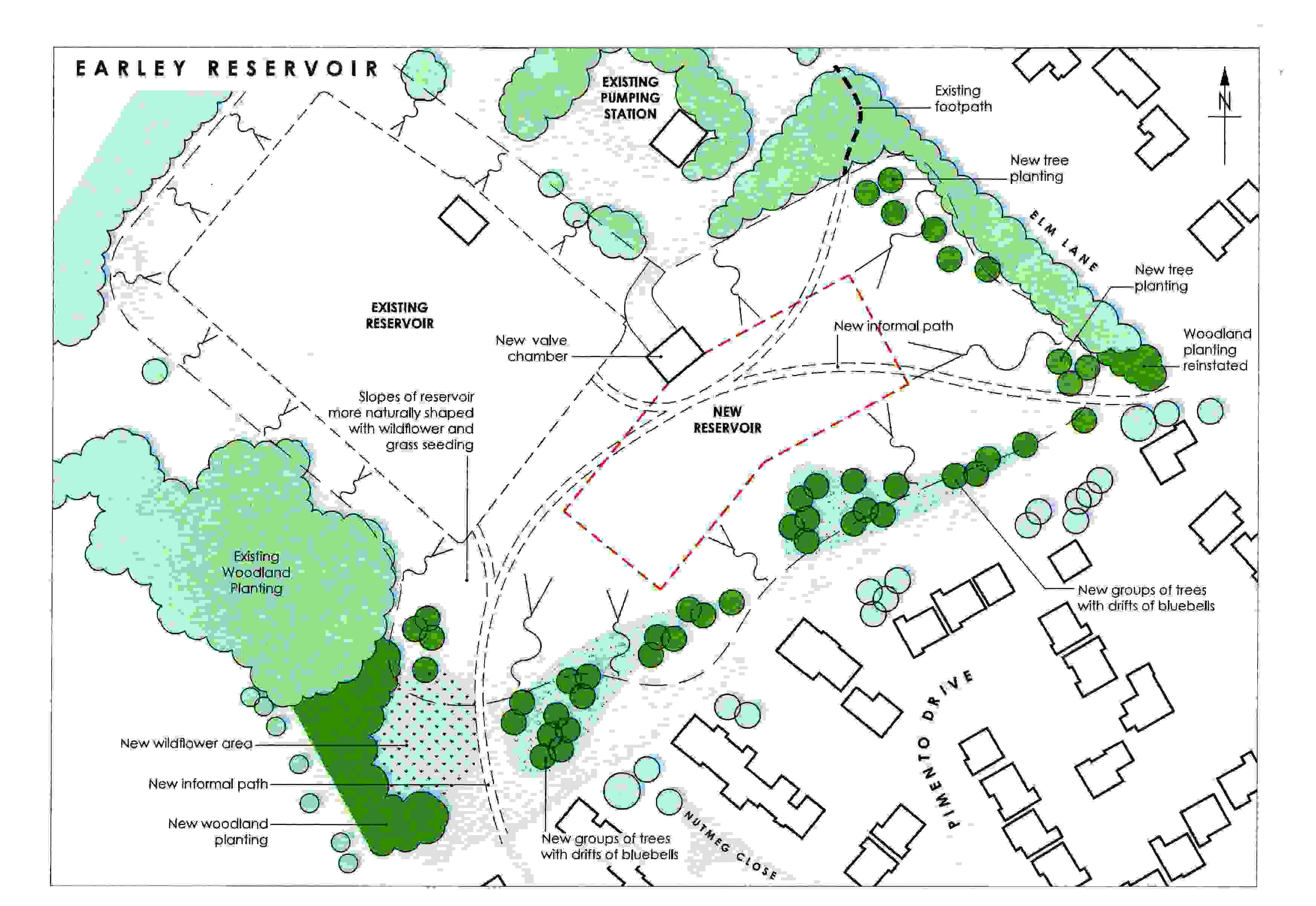
PLANS FOR ELM LANE RESERVOIR
Brian Hackett attended an ETC Planning Committee meeting in August to hear a representative from Thames Water talking about their plans for the reservoir. The following are some of the details from that talk.
Most of the construction work will be done off-site, and delivered as prefabricated sections, so there will be no constant flow of ready-mixed concrete lorries. Lorries will not in general be allowed onto the workings, to avoid spreading mud. Lorries will park-up away from the site, and only be allowed to deliver when there is no congestion. The number of lorry movements will be quite small. They are using the soil to form screens around the site while it's operating, to reduce noise; no soil will be removed from site. There will also be netting to help reduce dust, and they will spray the soil to keep it damp. About 10 people will be working on the site, and they will not be allowed to park in local streets: there will be an on-site car park. There will be no above-ground buildings when it's finished, and the remaining soil will be used for landscaping. The above illustrated plan looks to be sympathetic to the local environment
|
|
NEWS FROM BEYOND EARLEY
Drastic reduction in the numbers of honey and bumble bees
The Environment Secretary Owen Paterson is looking into the possibility of banning controversial neonicotinoid pesticides. This could mean the loss of millions of pounds for multinational companies who manufacture neonicotinoids which have been cited as the possible villains in the piece. Farmers would also have to find alternative means of protecting their crops. But DEFRA have to consider the mounting body of research implicating neonicotinoids in environmental problems, especially the widespread declines of honey bees and bumble bees, needed to pollinate so much of the world's vital food crops.
Top Animals in the Firing Line:
Nagaland, a North Eastern state of India, was once the scene of bloody battles in WW2.
 It now sees massacre on a huge scale of the beautiful Amur falcon, which migrates from southern Africa to Mongolia and eastern China, and back, every year, an extraordinary round-trip of some 14,000 miles. It stops en route in NE India and Bangladesh to fatten up, an unfortunate turn of phrase, since it is estimated that 120,000 to 140,000 birds are being slaughtered in Nagaland every year during their passage through the state. It now sees massacre on a huge scale of the beautiful Amur falcon, which migrates from southern Africa to Mongolia and eastern China, and back, every year, an extraordinary round-trip of some 14,000 miles. It stops en route in NE India and Bangladesh to fatten up, an unfortunate turn of phrase, since it is estimated that 120,000 to 140,000 birds are being slaughtered in Nagaland every year during their passage through the state.
Birds are caught in nets spread across the birds' roosting sites and sold alive for food, and some killed to be eaten locally. Observers note that far more are killed than needed to fulfil local demand and assume there must be external markets. India, as a signatory to the Convention on Migratory Species (CMS), is duty bound to prevent this massacre, provide safe passage, as well as draw up appropriate action plans for the long-term conservation of this bird.
The WWF is on the prowl - to recruit dogs to save tigers!
They estimate only 3200 tigers are left in the wild.
 We all know the useless trade of tiger parts for 'magic' medicine and decoration. WWF want to recruit and train sniffer dogs to sniff out tiger parts and catch those who do the trading. Stop the sale and kill the trade. Whatever they raise can be doubled over the next few weeks by some generous donors. A donation would make a good Christmas gift for someone with a love of wildlife! Or perhaps it could be in memory of 'an absent friend'. Click here for more information, or to make a donation. We all know the useless trade of tiger parts for 'magic' medicine and decoration. WWF want to recruit and train sniffer dogs to sniff out tiger parts and catch those who do the trading. Stop the sale and kill the trade. Whatever they raise can be doubled over the next few weeks by some generous donors. A donation would make a good Christmas gift for someone with a love of wildlife! Or perhaps it could be in memory of 'an absent friend'. Click here for more information, or to make a donation.
|
EARLEY WILDLIFE SIGHTINGS AND GARDEN SURVEYS
Two observations from members too late to include in the last newsletter.
August 29th, Tony White: Our daughter helped bring 9 painted lady butterflies into Lower Earley over the summer thanks to the Insect Lore butterfly garden product. (Well done, Tony's daughter. Ed)
September 28th, Robert Weston: My daughter and I were happily clearing some old planks of wood from an area on our allotment, when she suddenly squeaked with delight. She'd come across a medium sized toad. As the area we were clearing was going to be very disturbed, we relocated the toad further down the allotment next to some logs, nettles and brambles which will remain undisturbed.
We were delighted to find a toad on our allotment and it adds to other wildlife we have there - some more welcome than others! We regularly find lizards in the summer, frogs, many birds (including a cuckoo this spring), rabbits, mice, rats. This week there was evidence of a return of deer.
(Shows the value of allotments to wildlife. Ed)
On October garden surveys:
Gillian noted "The birds are back - lovely to see the flash of the jay's wings."
Margaret heard "Local foxes barking and howling at 03.35 for 20 minutes."
|
LOCAL FORTHCOMING EVENTS 2012
Monday, 17th December Earley Environmental Group Christmas Social, 19.30 to 22.00 at the Interpretation Centre, Maiden Erlegh Reserve, Instow Road. Come along to celebrate the season with music, food and a quiz. Contributions of food and/or drink would be helpful. All welcome.
Monday, 21st January 19.30 to 21.30. Earley Environmental Group AGM at Function Room, Maiden Place Community Centre, off Kilnsea Drive, followed by talk by Martin Sutton on the Maiden Erlegh School weather station and online reporting of weather by the students.
Wednesday, 13th February 19.30 to 21.30. Take a closer look at walls, a talk by Kit Brownlee, Function Room, Maiden Place Community Centre, off Kilnsea Drive.
Sunday, 24th March HELP (Huge Earley Litter Pick) our annual litter pick. This is in two sessions: 10:00-12:30 and 14:00-16:30. Meet at the Interpretation Centre at Instow Road for each session. Contact Grahame Hawker, 0118 986 8995.
Monday, 15th April 19.30 to 21.30 Do birds earn their keep? A talk by Melanie Orros of Reading University, Function Room, Maiden Place Community Centre, off Kilnsea Drive.
Check website and posters for more details.
|
|
Bits and pieces
EASI (Earley Adopt-a-Street Initiative) would like more volunteers. Help keep your street clear of litter. Everything provided. . Phone Peter Soul, 0118 9264997 or email
Can you offer active help to EEG? If so, phone 0118 962 0004 or go to the website. We would welcome more member involvement.
Join the EEG Yahoo Group and post your sightings and messages. You’ll find a link to Yahoo on our website.
EEG Committee Members can be found on www.earleyenvironmentalgroup.co.uk under Contacts, or phone 0118 962 0004
For Wildlife Survey Forms, go to the website or phone Earley Town Council 0118 986 8995
Comments or contributions to the newsletter to: the Editor or 2 Reeds Avenue, Earley, RG6 5SR. We would welcome short contributions from members to the newsletter.
If you know anyone who would like to join EEG, membership forms are available from Earley Town Council, 0118 986 8995, on the website under Downloads , or send an e-mail to the Membership Secretary. Please inform Liz if you intend to change e-mail or address at 50 Kenton Rd, Earley RG6 7LG, or send her an e-mail.
|
SUPPORT YOUR LOCAL SHOPS
The True Food Co-op, Silverdale Centre :There is now a True Food Co-op operating in Earley, their most successful market. Their mission is to take low cost organic food out to the people, bypassing the supermarkets which charge a lot for organics They hold markets at the Silverdale Centre on Fridays, 5 to 8. 15 pm. They have a website giving dates www.truefood.coop
Pet Fayre 9 Maiden Lane Centre Lower Earley : A small independent shop, with bird feeders of all kinds, a variety of bird feed, large bags of which the shop is willing to deliver locally, or pick it up in your car from the back of the shop, tel 0118 9266512, e-mail sales@petfayre-reading.co.uk or go on the comprehensive website www.petfayre-reading.co.uk
|
|
Thanks to ORACLE Corporation for reproducing our newsletter on recycled paper. Oracle is the world's second largest software company, situated at Thames Valley Business Park in Earley. Oracle UK adheres to the ISO14001 Environment Standard which confirms Oracle has considered and acted upon its environmental impact. As part of Oracle’s corporate social responsibility they support a number of local groups, including us. They have given us valuable support in reproducing the hard copies of our newsletter in colour, as well as printing posters and membership leaflets for us to distribute to libraries, schools etc. |
|